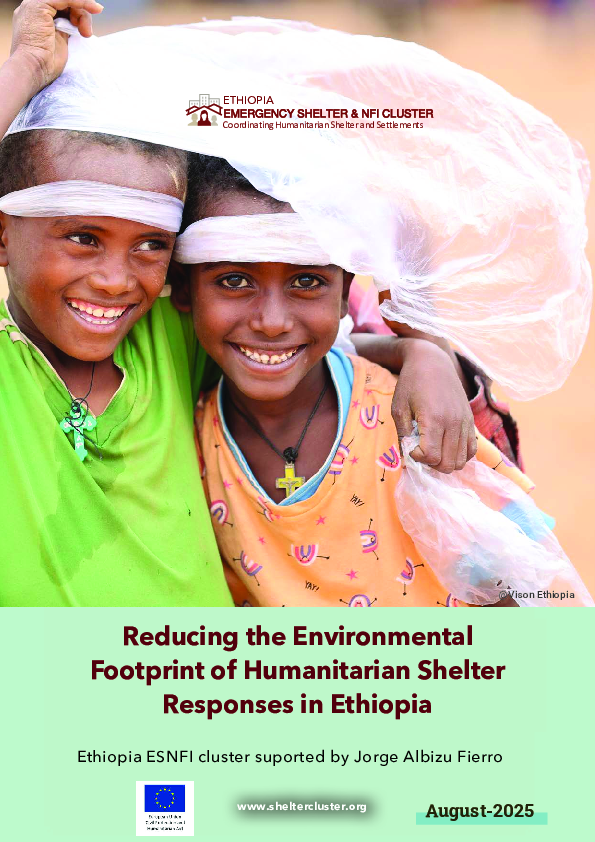Ethiopia
Reducing the Environmental Footprint of Humanitarian Shelter Responses in Ethiopia, August 2025
This report explores the environmental consequences of Shelter and Non-Food Item (SNFI) interventions in Ethiopia’s Internally Displaced Person (IDP) sites, with a focus on the Northwestern Zone of Tigray and the Somali Region. It highlights the urgent need to balance humanitarian aid with environmental sustainability in both emergency and long-term displacement settings.
Key findings reveal that the use of low-quality shelter materials and poor waste management practices are contributing to deforestation, pollution, and ecosystem degradation. Challenges such as illegal logging, climate stressors, and resource scarcity further exacerbate environmental risks.
While tools like NEAT+ are being used to assess environmental impacts during planning, the implementation of mitigation measures remains limited due to funding constraints and coordination gaps. Promising initiatives, such as green procurement and waste-to-resource projects, are emerging but are not yet widely adopted.

